Abstract
Previous studies of nasal function after laryngectomy have suggested that patients must accept complete and irreversible anosmia as an inevitable consequence of the operation, and that this is due to interruption of a poorly defined neuronal interaction between larynx and nose. In this study nasal function was investigated in 23 laryngectomees and 10 patients about to undergo laryngectomy. Scanning electron microscopy showed a more densely ciliated nasal epithelium in the laryngectomees compared with the preoperative controls, and nasal mucociliary transport, measured by saccharine clearance, was significantly faster (P less than 0.01) in laryngectomees. Olfactory acuity, as determined by the threshold for detection of insufflated pyridine vapour, was normal in laryngectomees. Some laryngectomees did have a relatively normal sense of smell; these were shown to be those who had discovered a technique of sniffing using buccopharyngeal rather than respiratory musculature. These findings have obvious implications for the rehabilitation of laryngectomees, many of whom may otherwise have to contend with distressing anosmia as well as the other physical and psychological consequences of the operation.
Full text
PDF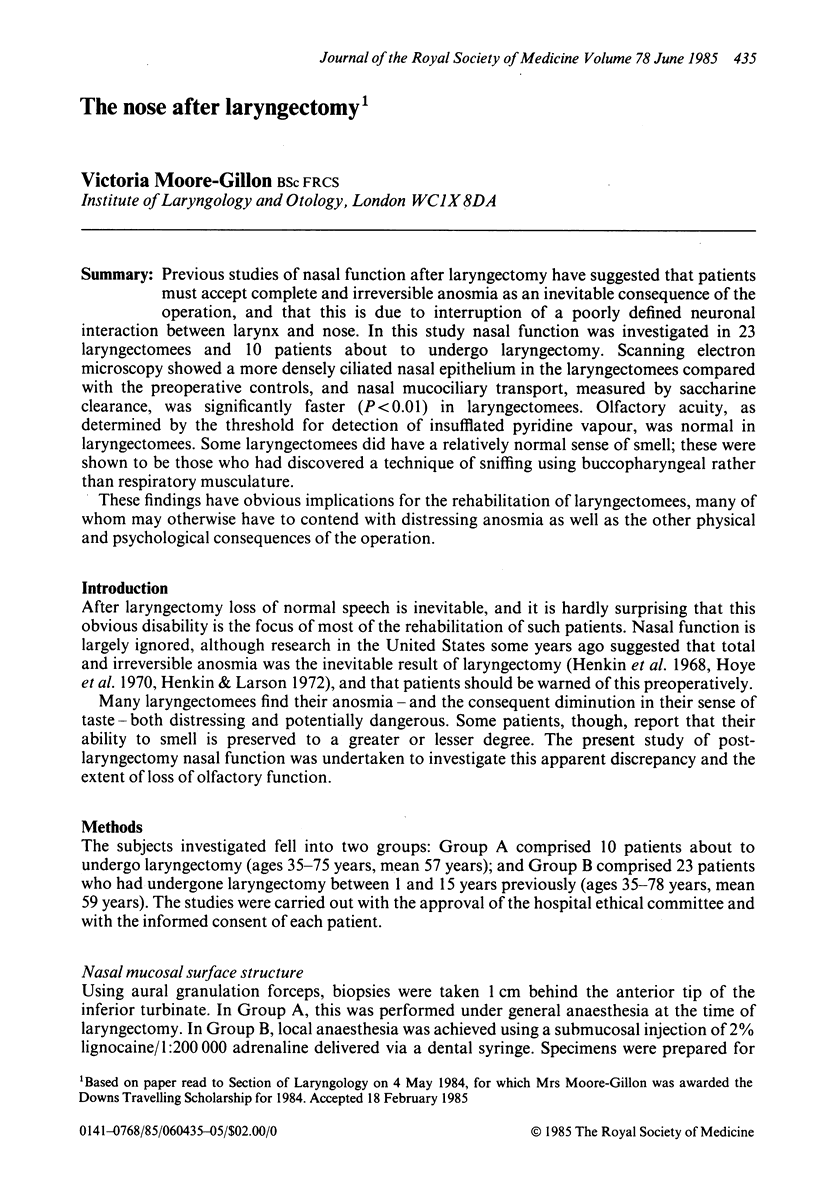
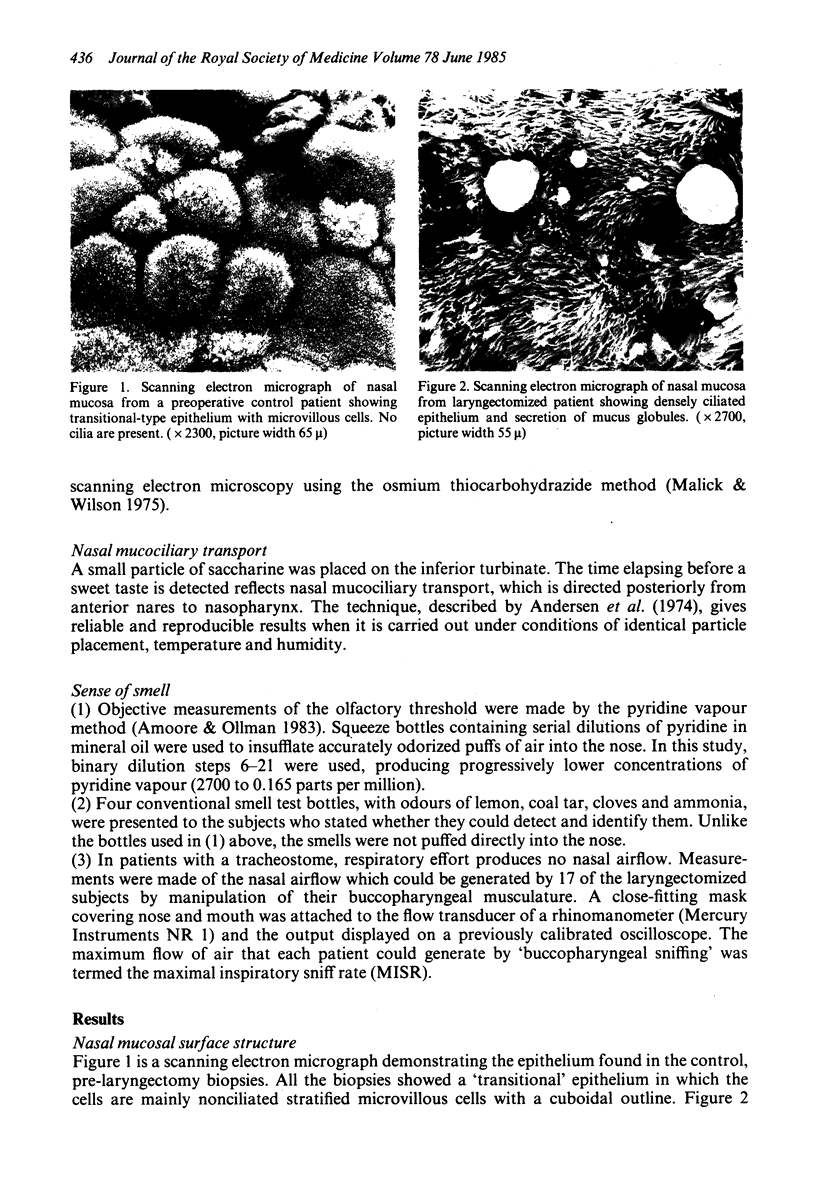
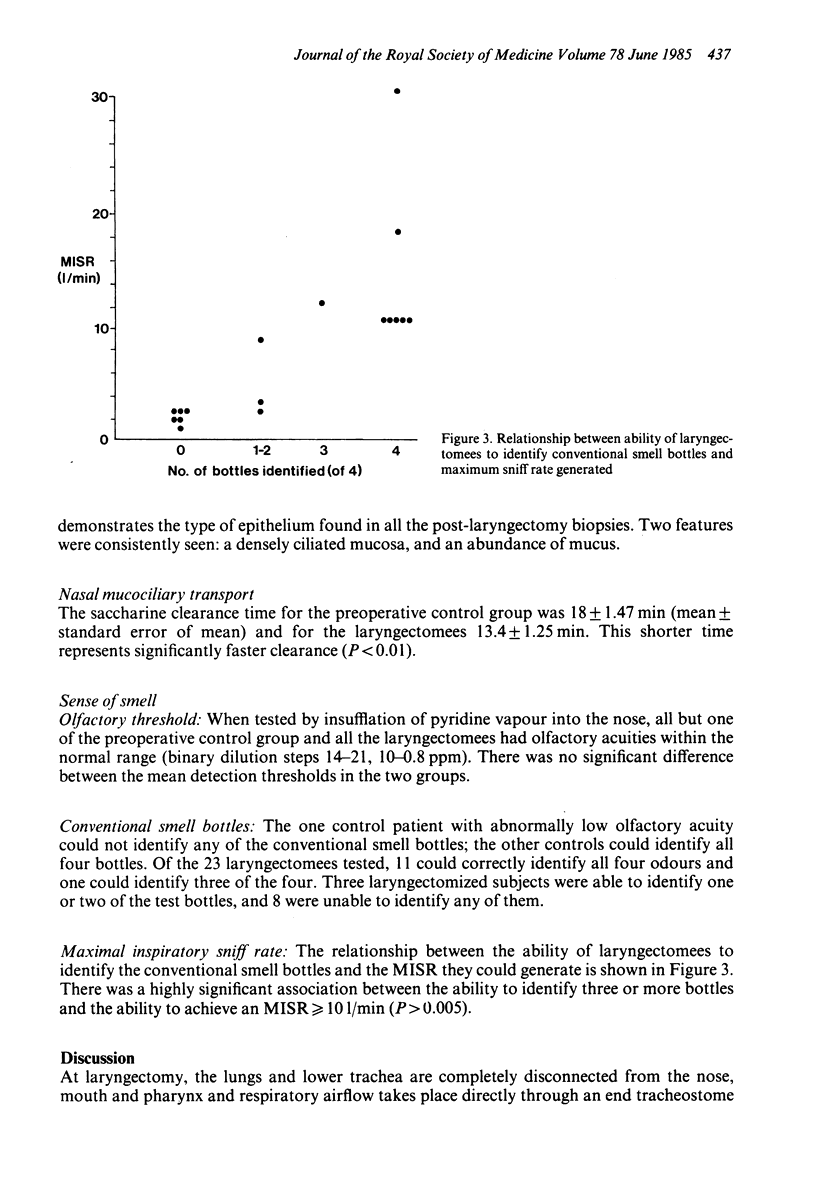
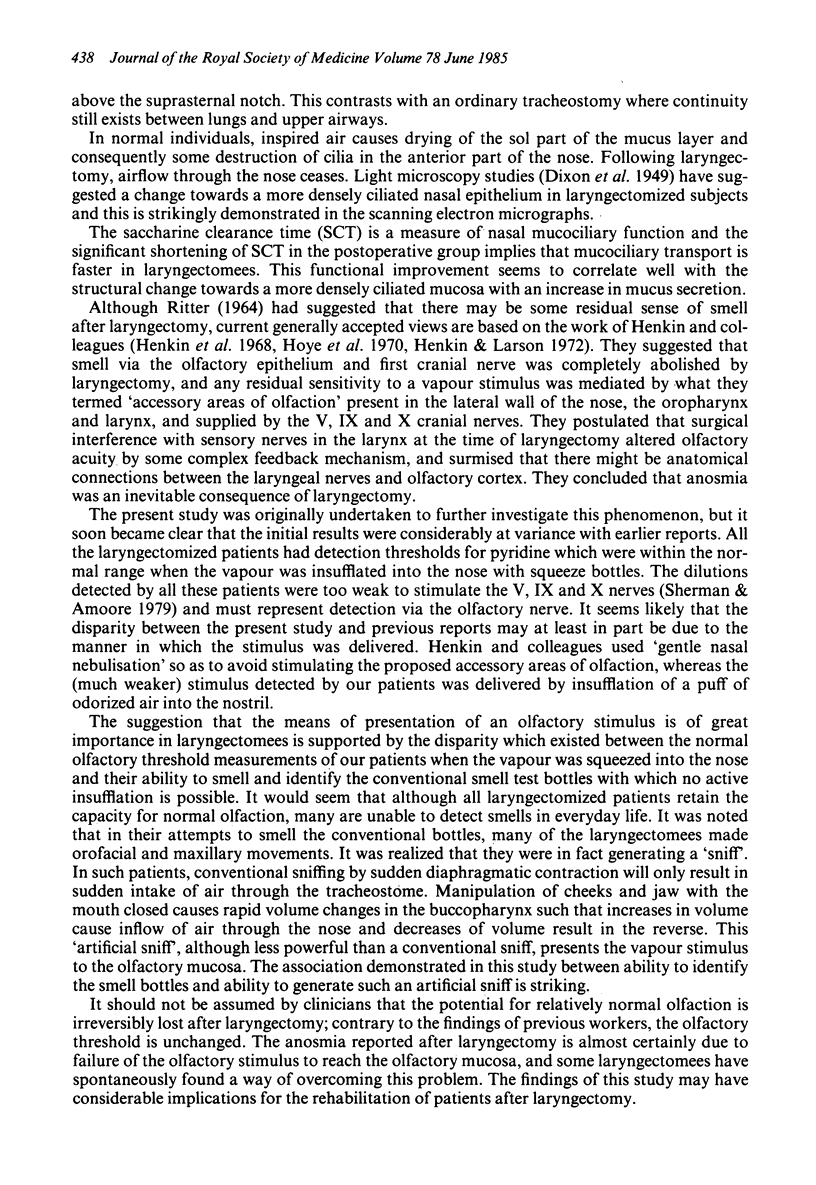
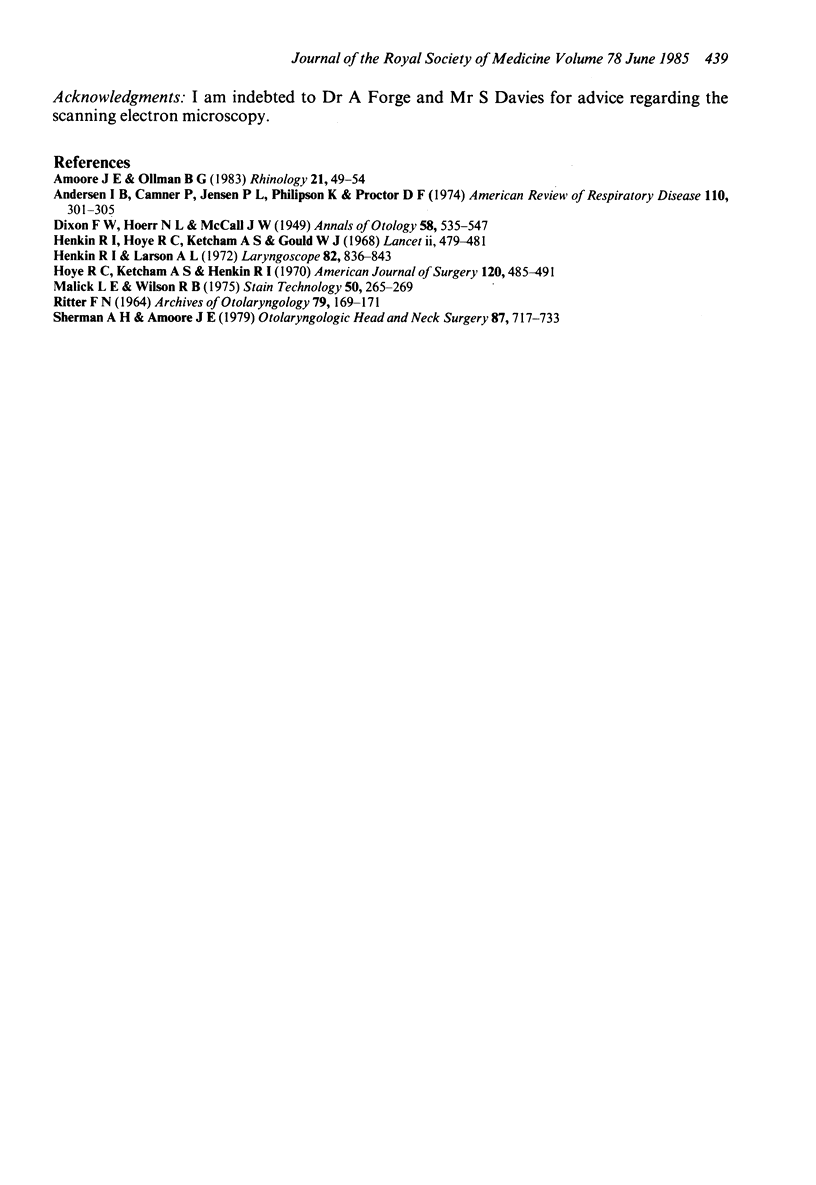
Images in this article
Selected References
These references are in PubMed. This may not be the complete list of references from this article.
- Amoore J. E., Ollman B. G. Practical test kits for quantitatively evaluating the sense of smell. Rhinology. 1983 Mar;21(1):49–54. [PubMed] [Google Scholar]
- Andersen I., Camner P., Jensen P. L., Philipson K., Proctor D. F. Nasal clearance in monozygotic twins. Am Rev Respir Dis. 1974 Sep;110(3):301–305. doi: 10.1164/arrd.1974.110.3.301. [DOI] [PubMed] [Google Scholar]
- Henkin R. I., Hoye R. C., Ketcham A. S., Gould W. J. Hyposmia following laryngectomy. Lancet. 1968 Aug 31;2(7566):479–481. doi: 10.1016/s0140-6736(68)90647-8. [DOI] [PubMed] [Google Scholar]
- Henkin R. I., Larson A. L. On the mechanism of hyposmia following laryngectomy in man. Laryngoscope. 1972 May;82(5):836–843. doi: 10.1288/00005537-197205000-00010. [DOI] [PubMed] [Google Scholar]
- Hoye R. C., Ketcham A. S., Henkin R. I. Hyposmia after paranasal sinus exenteration of laryngectomy. Am J Surg. 1970 Oct;120(4):485–491. doi: 10.1016/s0002-9610(70)80012-5. [DOI] [PubMed] [Google Scholar]
- Malick L. E., Wilson R. B. Modified thiocarbohydrazide procedure for scanning electron microscopy: routine use for normal, pathological, or experimental tissues. Stain Technol. 1975 Jul;50(4):265–269. doi: 10.3109/10520297509117069. [DOI] [PubMed] [Google Scholar]
- RITTER F. N. FATE OF OLFACTION AFTER LARYNGECTOMY. Arch Otolaryngol. 1964 Feb;79:169–171. doi: 10.1001/archotol.1964.00750030175013. [DOI] [PubMed] [Google Scholar]
- Sherman A. H., Amoore J. E., Weigel V. The pyridine scale for clinical measurement of olfactory threshold: a quantitative reevaluation. Otolaryngol Head Neck Surg (1979) 1979 Nov-Dec;87(6):717–733. doi: 10.1177/019459987908700604. [DOI] [PubMed] [Google Scholar]




